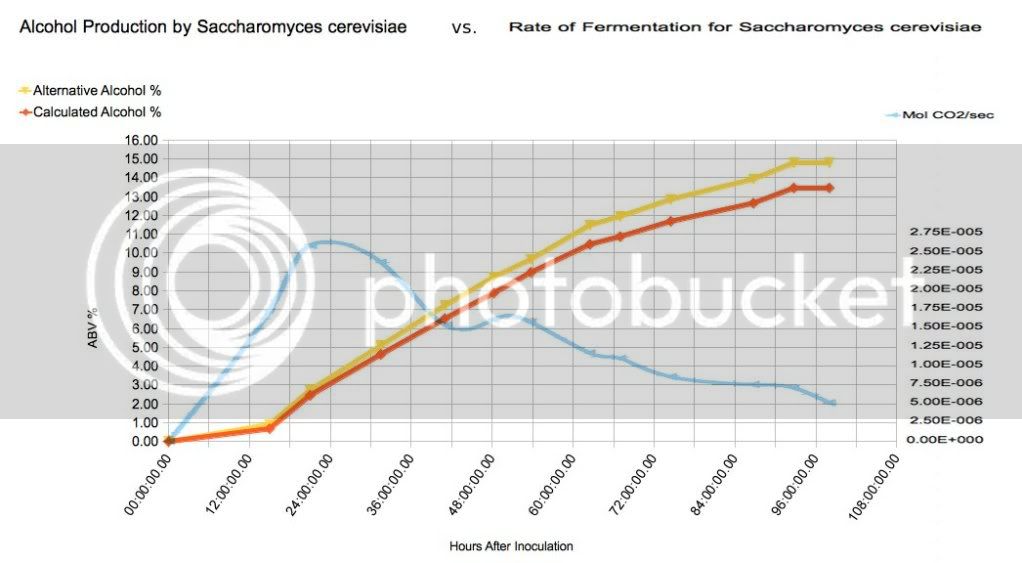Ultimately, of course, the solubility of CO2 in fermenting wort/beer does depend on the composition of the solution. CO2 is, for example, approximately 10 times more soluble in EtOH than it is in water and Henry coefficient depends, thus, on the mole fraction of EtOH. The equilibrium concentration of CO2 depends on the Henry coefficient, the fugacity of CO2 over the solution and the activity of carbonic acid in the solution. But Henry coefficient is, for all practical purposes, constant until the mole fraction of EtOH approaches 0.2 ( in a 5% ABV solution it is about 0.016), at 1 atmosphere fugacity is equal to pressure and, as ionic strength in beer is in the first place low and in the second place does not change appreciably over the course of fermentation and as H2CO3 is not a charged species activity coefficient for H2CO3 will be a constant very close to 1 throughout. Thus, to the level we could reasonably make measurements, solubility of CO2 is constant being determined by pressure (1 atmosphere once the surface is blanketed by CO2) and temperature. The presence of extract also has an effect on the mole fraction of the solvent but in a 12 °P maltose wort the mole fraction of water is 99.3%.
That's the theoretical evidence. Practical data can be found in the Zahm and Nagle (ASBC) table which gives volumes of dissolved CO2 in beer as a function of temperature and pressure. These tables are used for the analysis of beers of all alcoholic strengths. If ASBC had found that failure to account for alcohol content, true extract etc. caused appreciable error then they would have prepared additional tables or given correction factors based on whatever parameter was responsible for the variation.
"Equilibrium" here does not mean chemical equilibrium of the system. Clearly a system in which a reaction (fermentation) is underway cannot be at chemical equilibrium. What it does refer to is equilibrium WRT CO2. If CO2 does not escape at the rate it is formed then the chemical potential of CO2 in solution rises to the point where it exceeds the chemical potential of CO2 in the gas over the surface of the fermenting wort. This causes CO2 to move from higher to lower potential i.e. into the headspace. This continues to the point where the potentials are equalized. WRT the headspace: the total pressure in a fermenter open to the atmosphere is 1 atmosphere. Thus the maximum partial pressure of CO2 in the headspace can be no more than 1 atmosphere and that is reached when CO2 from the ferment has displaced all the air. From then on at any time the concentration of carbonic acid exceeds the Henry coefficient gas moves to the headspace. Any time [H2CO3] < Khy gas moves to the wort. Thus the equilibrium condition here represents one in which the headspace is full of CO2 at fixed pressure and temperature, the wort is at fixed temperature and CO2 is leaving the wort at the rate the yeast produce it. Note: We define the Henry coefficient here such that [H2CO3] = pCO2*Khy with the units of Khy being mg/L-atm.
WRT the indicator - I'm not sure what you would expect that to tell you. Wort pH drops appreciably in the first few hours of a fermentation as the yeast establish an environment optimum for their well being (and suboptimal for competing organisms). Thereafter the yeast tend to buffer wort pH to a constant value dependent on the strain. Thus pH is more indicative of yeast strain than CO2 content. Using the nominal 1 atm CO2 pressure over ferementing beer (resulting in about 1 volume dissolved dependent on temprature) the pH would be, in water, about 3.9. More typical beer pH would be 4.5 or so (though pH of as low as 4 are found in some ales).




